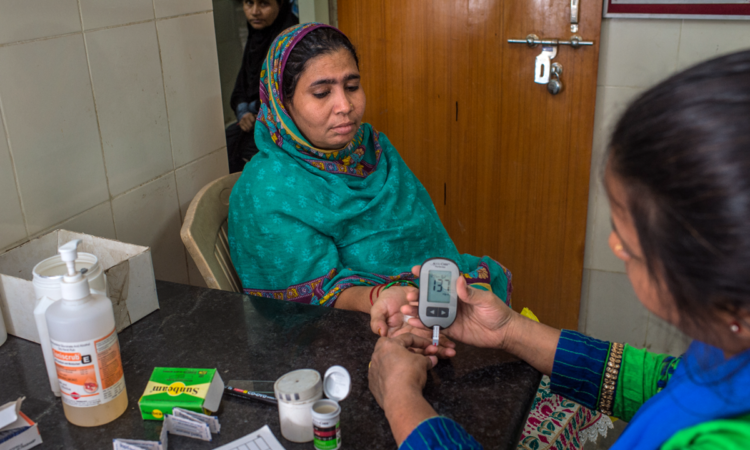
By Dr Poonam Khetrapal Singh, WHO Regional Director for South-East Asia
Access to quality healthcare is a fundamental human right, yet millions of people around the world still face significant barriers in accessing diabetes care. The theme for World Diabetes Day 2023, “Access to Diabetes Care” aligns with the World Health Organization (WHO) South-East Asia Region’s NCD flagship.
Globally, around 422 million people have diabetes, and 1.5 million deaths are directly attributed to diabetes every year. In the WHO South-East Asia Region, more than 96 million people are estimated to have diabetes. Diabetes and its complications (blindness, kidney failure, heart attack, stroke, and lower limb amputation) bring about substantial economic loss to people with diabetes and their families, and to health systems and national economies. This toll is manifested through direct medical expenses and the loss of work and wages. The predictions regarding the future economic burden of diabetes are as alarming as those regarding its future prevalence.
WHO South -East Asia Region has taken several measures to address this growing health challenge in alignment with the strategies of the WHO Global Diabetes Compact. The Seventy-sixth session of the WHO Regional Committee for South-East Asia endorsed the SEAHEARTS (WHO HEARTS package adaptation to SE Asia Region), to accelerate CVD risk reduction and to place 100 million people with diabetes and hypertension on protocol-based management by 2025. These interventions will enhance access to diabetes care and reinforce NCD services at the primary health care level.
Countries in the region have made commendable progress in reducing tobacco use and have taken various measures to promote physical activity, healthy diet, and the adoption of healthy lifestyle, which are essential for reducing the risk of diabetes. Access to diabetes care services continues to expand in the Region. India has placed more than 24 million people with hypertension and diabetes on standard care. Thailand has 3.4 million patients registered for diabetes treatment and having a control rate of 33 %. The WHO NCD Country Capacity Survey of 2021 has indicated that in most countries in the region, the essential medicines and technologies for diabetes management are ‘generally available’ in primary healthcare centers. Healthcare providers are being trained to prevent and manage diabetes using WHO’s technical package for diabetes, HEARTS-D, tailored to the national context. Emerging technologies, including Artificial Intelligence -based solutions, are being explored for the early detection of diabetes complications among enrolled patients.
Improving access to care for diabetes is a priority for the Region. WHO appeals to countries and stakeholders to take measures through several key avenues that includes:
First, it is imperative to scale up the efforts to reduce risk factors adopting a life course approach. This will need a ‘whole- of-society’ and ‘whole- of-government’ approach along with social participation.
Second, a focus on bridging the treatment gap and achieving better disease control among patients is essential. This can be achieved through application of treatment protocols delivered through trained caregivers, and equipping primary healthcare with advanced technology, including HbA1c testing for disease monitoring. Additionally, efforts should be enhanced to make diabetic drugs, including insulin, more affordable and accessible in primary health care.
Third, timely diagnosis and management of complications of diabetes, with a specific focus on high-risk individuals has to be taken up as part of the care continuum. Implementing up-to-date guidelines for early complication detection, establishing efficient referral pathways for patients to access higher-center evaluations, and enabling teleconsultation to enhance healthcare accessibility are critical components.
Fourth, implementing an information system that facilitates longitudinal monitoring and follow-up of individuals, and utilizing digital solutions to measure a minimal set of indicators, is critical. Furthermore, investment in research and technology to simplify self-care management is needed.







